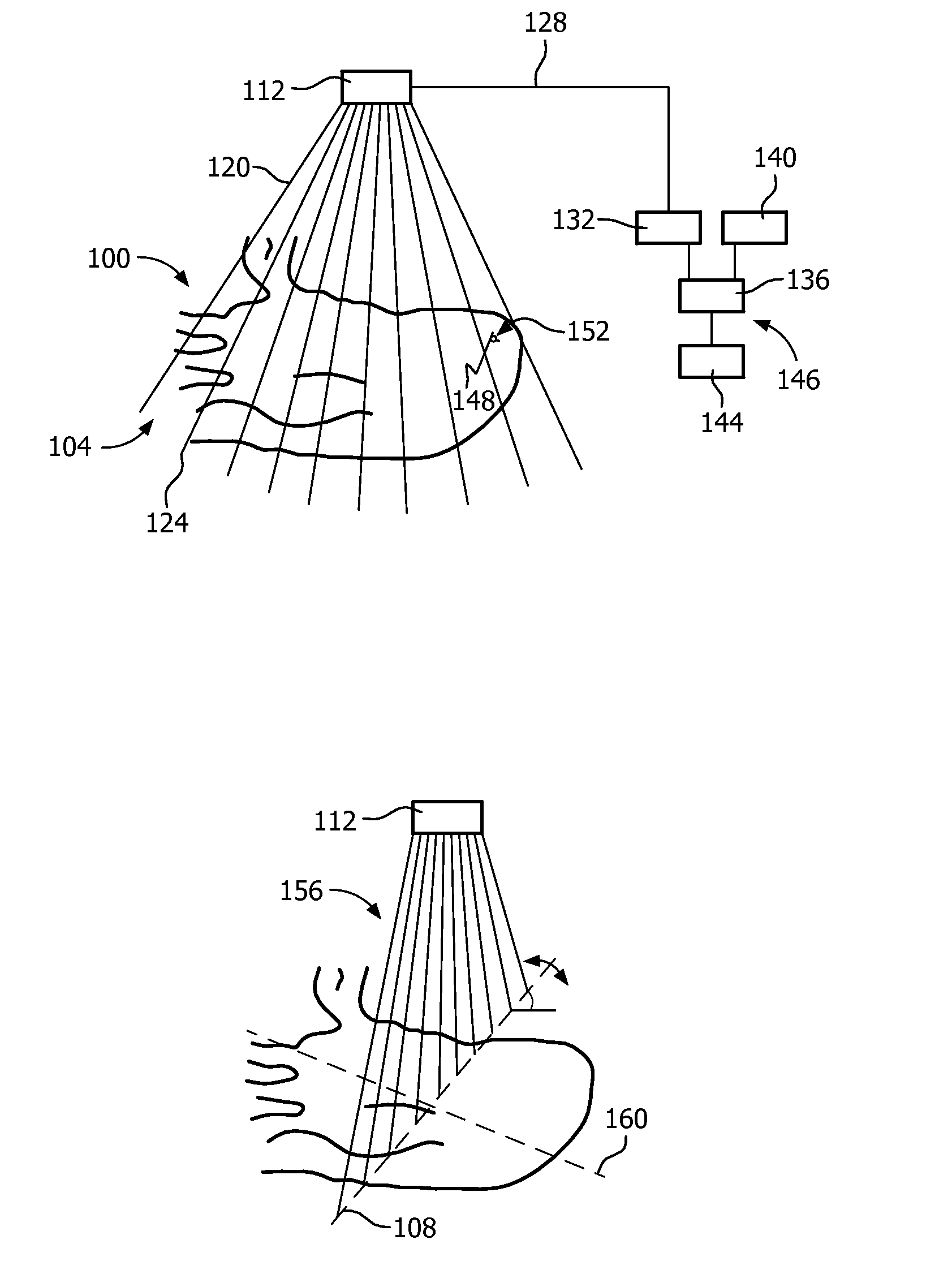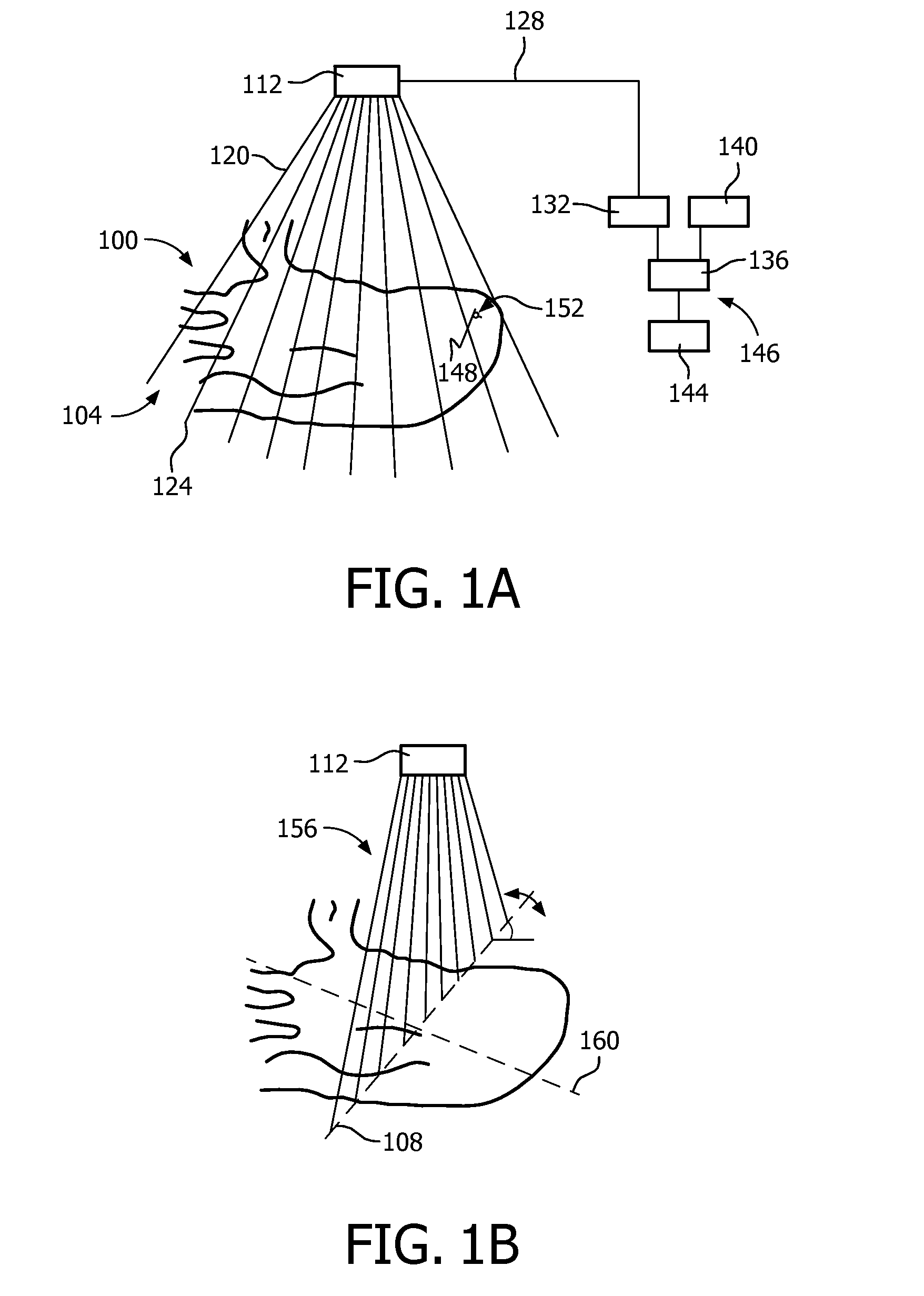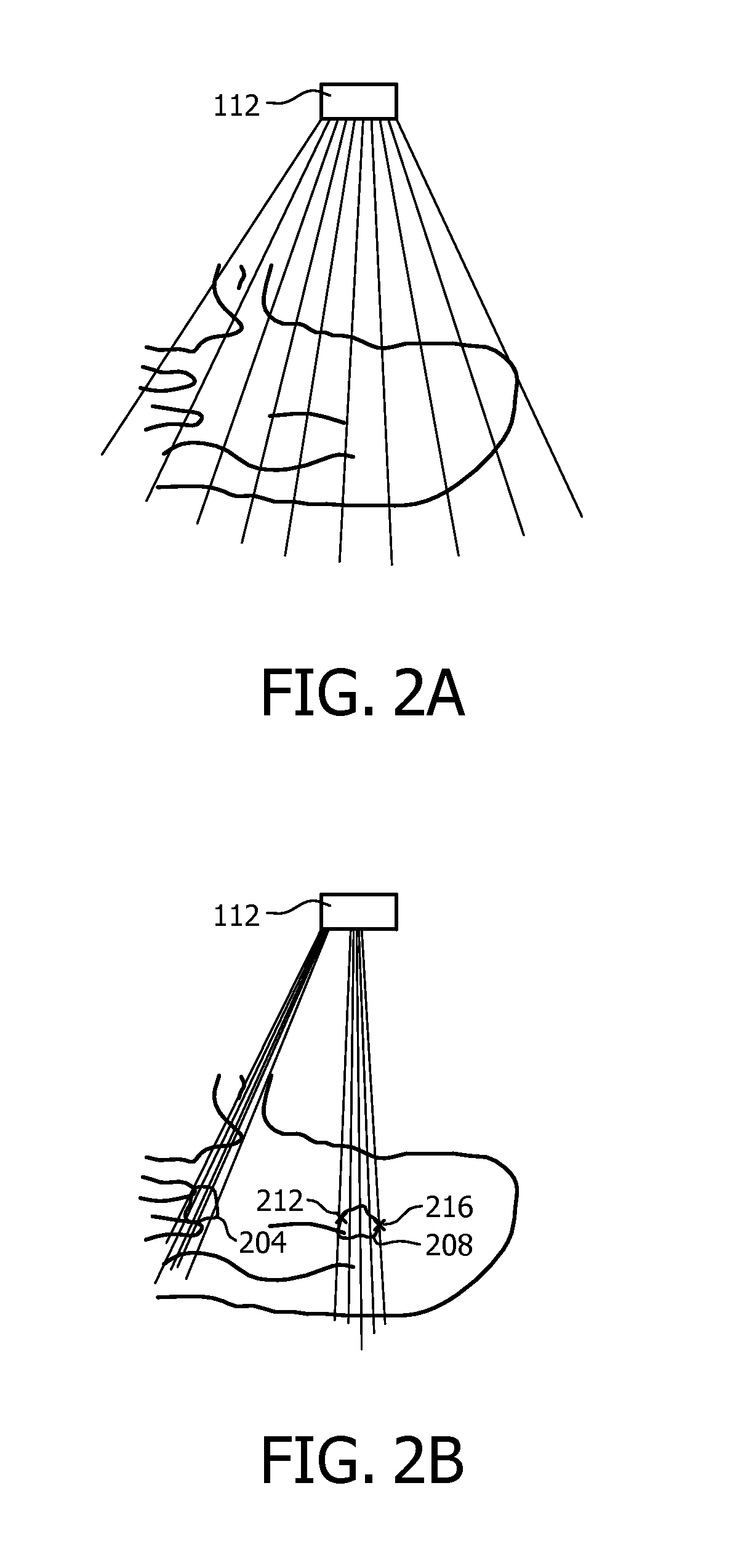Automatic imaging plane selection for echocardiography
an automatic selection and echocardiography technology, applied in the field of anatomy, can solve the problems of difficult to achieve high beam density and inaccurate quantification, and achieve the effects of high tissue contrast, fast diagnosis, and high resolution
- Summary
- Abstract
- Description
- Claims
- Application Information
AI Technical Summary
Benefits of technology
Problems solved by technology
Method used
Image
Examples
Embodiment Construction
[0041]FIGS. 1A and 1B show, by way of illustrative and non-limitative example, live imaging of a volume 100 such as an entire heart 104 of a human or animal, that imaging being subsequently reduced to live imaging within a single imaging plane 108. The imaging, in both cases, is performed by a probe 112. For cardiac applications, the probe 112 can be a TEE probe, for intracorporeal use, or a TTE probe. The TEE probe is advanced down the esophagus into position for imaging. In the TTE case, an imaging end of the probe 112 will typically be handheld and controlled by a sonographer, cardiologist or radiologist. In the TEE case, the probe 112 will typically be controllable by one or more pull cables for steering and a multiplane probe will be rotatable within the esophagus manually or by a motor. This maneuvering can be done under image guidance afforded by an imaging window in the probe 112 through which ultrasound imaging is performed. Once the probe 112 is properly positioned, volume...
PUM
 Login to View More
Login to View More Abstract
Description
Claims
Application Information
 Login to View More
Login to View More - R&D
- Intellectual Property
- Life Sciences
- Materials
- Tech Scout
- Unparalleled Data Quality
- Higher Quality Content
- 60% Fewer Hallucinations
Browse by: Latest US Patents, China's latest patents, Technical Efficacy Thesaurus, Application Domain, Technology Topic, Popular Technical Reports.
© 2025 PatSnap. All rights reserved.Legal|Privacy policy|Modern Slavery Act Transparency Statement|Sitemap|About US| Contact US: help@patsnap.com



